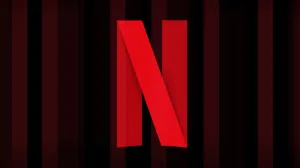Nintendo’s Metroid franchise has long been known for its high quality. While the series has had a couple of missteps over the last 35 years, games like Super Metroid and Metroid Prime are regarded as some of the greatest of all time. Metroid Dread is the first game in the franchise to appear on Nintendo Switch, and fans of the platform will be happy to know that it continues the proud tradition of the series by delivering one of the console’s must-own titles and an experience that easily ranks among the best in the Metroid series.
Videos by ComicBook.com
Metroid Dread is technically the fifth entry in the main Metroid saga. Picking up after the events of 2002’s Metroid Fusion, Samus Aran travels to ZDR after seven EMMI robots were sent to the planet and stopped communicating with the Galactic Federation. Upon her arrival, Samus discovers that the robots have been reprogrammed to attack and hunt the bounty hunter for some unknown purpose. While Metroid Fusion incorporated some stealth elements, Metroid Dread‘s stealth sections are much more intense, somewhat resembling a survival-horror game. The seven EMMI robots are confined to specific areas of the map, and when Samus enters each region, she is stalked by them. The EMMI can only be destroyed when Samus gains the Omega Blaster upgrade which wears out after each use. Until she finds it, she can only shrug off the EMMI with a well-timed button press. Otherwise, if she’s caught, it’s Game Over.
During my playthrough, the EMMI reminded me a lot of the Crimson Heads from Capcom’s Resident Evil remake. Both can pursue the player through multiple rooms, and both are extremely difficult to kill. Dread earns its name in spades as EMMI sections of the game never failed to make my heart absolutely pound in my chest. I found myself simultaneously loving and dreading EMMI sections of the game. Truth be told, I didn’t think much of the robots when they were first revealed back at E3, but they have quickly earned their place among the most memorable villains in the series. The intensity of these encounters also made it incredibly satisfying each time one of the robots was rendered permanently offline.

While the EMMI offer a huge change from previous Metroid games, the rest of Metroid Dread should feel familiar to fans of the franchise. The 2D sidescroller tasks players with navigating interconnected sections of the map, and uncovering more regions as new upgrades are discovered. This can often cause the player to lose sight of where they should go next, but the game’s map is incredibly helpful at telling players which areas still hold secrets, and which power-ups must be used to progress.
What’s really impressive about Metroid Dread is the way that it takes the classic Metroid formula and builds on it, delivering an experience that feels familiar, but never derivative. Playing Metroid Dread gave me nostalgia for the days of playing Super Metroid in my parents’ basement, but developer MercurySteam never relied on that nostalgia to sell the game. There are enough new ideas that make it feel fresh, and Dread takes advantage of the fact that it’s a game on Nintendo’s strongest hardware to date. The game’s backgrounds, in particular are stunning. I really enjoyed my time in Burenia just seeing the rain falling and the waves crashing near the entrance. It reminded me of the feeling I got when I entered Phendrana Drifts for the first time in Metroid Prime.

While Metroid Dread is very enjoyable, there are parts of the game that offer a significant challenge, particularly its boss fights. However, the game’s difficulty never feels unfair. In fact, the game is incredibly forgiving, offering a significant number of save points, and when death comes in a boss fight, players find themselves outside the door they just entered, rather than where they saved last. There is also a rhythm to boss encounters, and as players start to figure out the necessary strategy, the player will start to get further and further, until the boss has been defeated. As a result, there’s a real sense of accomplishment to be found.
As the first wholly-original 2D Metroid game in 19 years, Metroid Dread had a very difficult legacy to live up to. Thankfully, the game delivered on its promise in a very big way. As a long-time fan of the franchise, I couldn’t be happier with Metroid Dread. It’s the kind of game that frequently made me say to myself “just five more minutes” when it was already two o’clock in the morning. Super Metroid is considered by many to be one of the best video games ever made. Gamers will have to judge for themselves if Metroid Dread managed to surpass it, but there’s no doubt in my mind that it deserves to be considered among the best games in the series. It has its challenging elements, and they might scare some players off. However, those that stick with the game will be rewarded with one of the year’s best experiences.
Rating: 5 out of 5
Metroid Dread is now available on Nintendo Switch. The game was provided by the publisher for the purpose of this review, and it was reviewed on a Nintendo Switch OLED.








